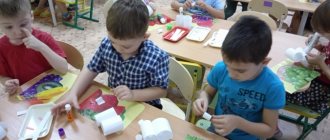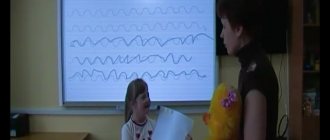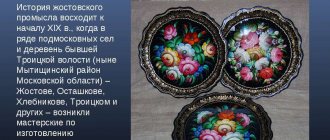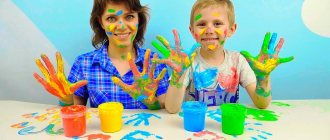Description
The profession of an artist is a creative work that requires good imagination, inspiration and mastery of drawing techniques. There are a lot of areas of artistic activity, so the profession has a number of narrower specializations:
- Illustrator. A specialist who creates pictures that describe text.
- Graphic artist. A master working in one contrasting color. Most often it is black. Pencil, ink, etc. are used for drawings.
- Cartoonist. This is a specialist who creates funny portraits or parodies of current events.
- Painter. The name of this industry is the most ancient and it is characterized by drawing from life.
- Fashion designer. This specialist specializes in creating sketches of new clothing collections. An artist who designs an outfit, a trendsetter.
- Copy artist. A specialist who creates copies of paintings and reproductions.
- Restoration artist. These specialists know exactly how to restore masterpieces to their original appearance.
- Specialist in the field of miniature painting.
- Portrait artist. This is working with people in order to fully convey their external characteristics. The transfer can be partial, it all depends on the style in which the master works.
There are many other equally popular areas of activity. The specifics of work in each of them have a number of differences. But one thing remains common - the art of conveying thoughts and fantasies through drawing.
What specialties to study?
In order to become an artist, it is not necessary to receive an education. The main thing is talent, but the absence of a diploma will not allow you to get a good job. Therefore, you should enroll in the following specialties:
- graphic arts;
- design;
- painting;
- artist of monumental and decorative art (painting);
- arts and crafts and folk crafts;
- theatrical and decorative arts;
- fine arts and drawing.
There are other highly specialized specialties.
Professions related to drawing: complete list
For anyone who is wondering what professions are related to drawing, we have compiled a complete list of specializations in the following areas:
| Design | IT sphere | Architecture and interior | Museums and exhibition halls | Film industry, theater and animation | Pedagogy | Fashion & Style | Handmade |
| Illustrator | Game artist | Architect | Restorer | Production designer | Art teacher | Fashion designer | Calligrapher |
| Graphic Designer | UX/UI designer | Interior designer | Art critic | Decorator | Academic drawing teacher | Confectioner | Cartoonist |
| Web designer | Digital designer | 3D modeler | Copyist | Cartoonist | Tutor | Visagiste | Sculptor |
| layout designer | Mobile Application Designer | Landscape designer | Miniaturist | 3D animator | Stylist | Master of enamel painting | |
| Architect VR | Portrait Expert | Dresser | Photographer | Mosaicist | |||
| Render artist (visualizer) | Makeup artist | Florist | Stained glass artist | ||||
| Puppet Master | Jeweler | Incrustor | |||||
| Master tattoo | Glassblower | ||||||
| The artist himself |
And these are not all creative professions related to drawing. Let's take a closer look at the most popular types of jobs on the list and find out what skills are required from a person for this specialty and whether there are prospects for career growth.
Where to study
You can get an art education in universities, art schools, or at home from experienced masters of fine art. The following institutions are considered the most prestigious for obtaining such a specialty:
- St. Petersburg State University of Technology and Design.
- Moscow State University of Design and Technology.
- Tolyatti State University.
- Arctic State Institute of Arts and Culture.
What do you have to do at work and specializations?
Daily responsibilities are quite extensive and largely depend on the specialist’s specialization. However, there is also a range of processes common to all specialists:
- Search for customers. The artist himself does this. To do this, he participates in exhibitions and presentations. Also, the search for customers is often carried out via the Internet. Many artists work as freelancers.
- Meeting customers and finding out their needs. Often clients order paintings as gifts, illustrations, portraits, caricatures. The artist must understand as clearly as possible what the clients want. In addition, it is important to demonstrate your work so that customers understand the style in which the author writes. After all, most of the names are not clear to ordinary people. It is precisely because of such mistakes that conflict situations arise.
- Thinking over the concept of a future work. The artist thinks through what he would like to depict and in what context.
- Purchase of necessary materials.
- Creating a sketch. This is a general outline of the future picture, with a visualization of the future location of key objects. It can be compared to a utility diagram.
- The actual drawing process itself. This is the longest stage. It is usually tied to deadlines. The creative process can take place over several months and even years.
- Framing the picture and preparing for delivery.
- Delivery of completed work and settlement with the buyer.
This is far from a complete range of artist responsibilities. It can only expand and increase depending on the specialization of the master.
Who is this profession suitable for?
This profession is suitable for creative people with a well-developed imagination. A true artist knows how to draw inspiration from everything that surrounds him and interpret his emotions into works of fine art.
In addition, self-organization is an important quality for any artist. After all, the working day is mainly structured depending on orders and inspiration. A master must be able to force himself to work even through “I don’t want to.”
Communication skills are very important. After all, an order depends 50% on whether the creator of works of art can please future customers.
Leave your comment
Gift certificates
Every third student is behind in school
Reading time: 3 minutes
The Russian government will consider the issue of providing children with milk in schools
Reading time: 1 minute
Watching TV impairs cognitive function
Reading time: 3 minutes
The Ministry of Education is ready to consider alternatives to the Unified State Exam
Reading time: 1 minute
The Ministry of Education is preparing a program for the modernization of pedagogical universities
Reading time: 1 minute
For schools with a modular schedule, holidays in the new academic year will be shortened by a week
Reading time: 2 minutes
Responsibility for resolving any controversial issues regarding the materials themselves and their contents is taken by the users who posted the material on the site. However, the site administration is ready to provide all possible support in resolving any issues related to the work and content of the site. If you notice that materials are being used illegally on this site, please notify the site administration using the feedback form.
All materials posted on the site were created by the authors of the site or posted by users of the site and are presented on the site for informational purposes only. Copyrights for materials belong to their legal authors. Partial or complete copying of site materials without written permission from the site administration is prohibited! The opinion of the administration may not coincide with the point of view of the authors.
Source
Demand
The demand for a profession directly depends on specialization. But if we take it in a general sense, it is very low. Basically, artists are freelance painters and work for themselves.
How much do people working in this profession earn?
Earnings directly depend on the employment and demand of the master. If you were able to find a permanent job in a printing company, publishing house or design firm, then you will have an income of 15 to 70 thousand rubles per month.
Freelance creators have an absolutely unpredictable level of income. They may not earn anything for months, or they may make huge amounts of money in just a few weeks.
Is it easy to get a job?
Finding a job is quite problematic due to low demand. If you manage to find a vacancy, then at the interview it is important to show yourself as the most creative and responsible person. Be sure to take your portfolio with photographs of the most striking and successful works.
You may be offered a test task, the completion of which will determine your employment.
How does one usually build a career?
Being an artist is not a profession for careerists. Usually there is no growth, but you can reach heights if you constantly develop and take part in competitions. The peak of your career can be your own exhibitions or the opportunity to teach other less experienced artists.
Prospects for the profession
There are prospects in every profession and an artist is no exception. It is important to be able to break into the elite of fine arts. To do this, you should take part in all kinds of fine art competitions and festivals. This will give you the opportunity to develop connections and get wealthy customers. In the future, substantial fees and recognition of your skill are possible, accompanied by the opening of your own gallery or art school. This is the apogee of the artist's career.
If you still have even the slightest doubt that the profession of an artist is right for you, then we strongly recommend taking a career guidance test from Profguide . It costs mere pennies, and at the same time allows you to avoid mistakes that can go in the wrong direction and cripple your whole life. Find out more >>
What does an artist do? Artist's tools
Anything can become an artist's tool: even a brush, even a stick.
But in the first stages, you should stock up on basic tools:
1. Paints. There are four types: oil, watercolor, gouache and acrylic. Usually an artist finds himself in one thing and works with this material.
- Watercolors can only be painted with a lot of water. Without it, the paints will not give the effect of lightness and subtlety of the image.
- Gouache is thicker than watercolor and applies more densely, so it requires less water.
- Acrylic combines the properties of oil and watercolor. You can use it “dry”, simply squeezing it out of the tube, or you can dilute it with water.
- Oil paints are used with a thinner. They do not require water and take a long time to dry.
2. Brushes. There are synthetic and wool made from pony, goat, squirrel, pig, sable, badger and kolinsky. Choose those that are convenient for you, based on the type of paints used.
- “Pig” and “badger” are most suitable for oil paints.
- “Squirrel” and “goat” work better with watercolors.
- Synthetic brushes are used for acrylic.
- “Pony”, “sable” and “kolin” are universal. They can be used to write with all types of paints.
If you paint with paints, take care of your workspace.
Otherwise, everything will be in color: table, chair, cat, cup of tea 3. Pencils. There are simple and colored ones.
There are usually no difficulties with colored ones
Simple pencils are divided according to the softness and hardness of the lead. There are Russian, European and American designation scales - see the diagram to see how they differ:
Marking and hardness scale of pencils
4. Coal. Coal can be charcoal or pressed. The pressed one looks blacker and fattier, this is its main difference. It is somewhat reminiscent of a pencil, but after completing the painting it needs to be fixed.
There are special means for fixing coal. You can buy them at an art store, or you can use hairspray.
5. Ink and ink. These are common materials for calligraphy. They draw with fountain pens. Mascara is a more water-resistant material than ink.
Calligraphy is very popular in the wedding industry. You can make invitations and place cards. For a wedding for 30 guests you can get about 10,000 rubles
6. Pastel. The texture of pastel resembles pencils or children's wax crayons. It comes in 4 types: dry, wax, oil and watercolor.
- Dry pastel shades and blends well.
- Wax pastels mix well with watercolors, but are used more often for children's drawings.
- Watercolor pastels can be washed out and turned into watercolors.
- Oil pastels hardly mix. It can be washed away with a solvent, and the resulting picture will be similar to those painted with oil paints.
7. Paper. Like brushes, paper is also classified according to the type of material the artist uses to paint.
There are 6 types of paper that artists use:
- Office paper - thin, for pencils (density - 80 g/m²).
- Watercolor - thick, for watercolor (density - 200 g/m²).
- Pastel - for pastels (density - 160 g/m²).
- Coated - for ink and ink (density - 75 g/m²).
- Drawing - for pencils and oil pastels (density - 200 g/m²).
- Craft - for charcoal and pastel (density - 70-90 g/m²).
Office paper is the smoothest. Draft, coated and craft are slightly rougher. And watercolor and pastel are the most textured. The degree of roughness of the paper depends on the material you are drawing with.
The pencil easily draws on office paper. But watercolor will simply flow off it, so you need very textured paper that will hold the paint.
For beginners, it is better to start with drawing paper. It is more accessible, cheaper and easier to use than other textured papers
8. Canvas. The main thing you need to know when buying a canvas is that if you want to paint on it with oil paints, then buy a primed canvas.
They also come on stretchers and on cardboard. Canvas on cardboard is thinner, and since it is glued to the cardboard, it will not be possible to stretch it, unlike canvas on a stretcher.
At the initial stage, you will definitely need paints, brushes, pencils and plain paper. And then, as you gain new skills, you will acquire other tools as needed.
Or maybe you will abandon them altogether and create with your body.
"Untitled Anthropometry (ANT 100)", 1960 © Hirshhorn Museum and Sculpture Garden, Washington, DC, United States © The Estate of Yves Klein c/o ADAGP, Paris
Photo: The Estate of Yves Klein c/o ADAGP, Paris








